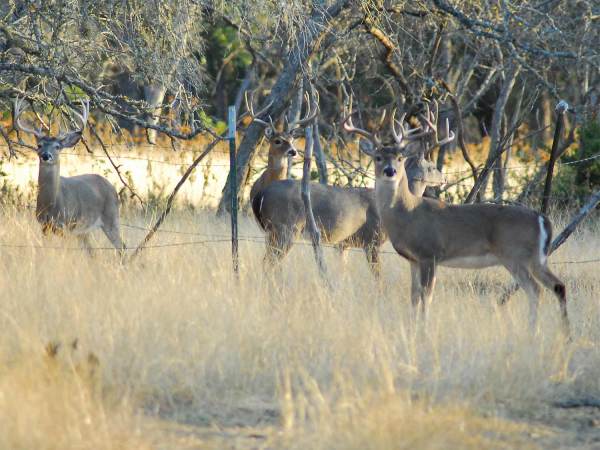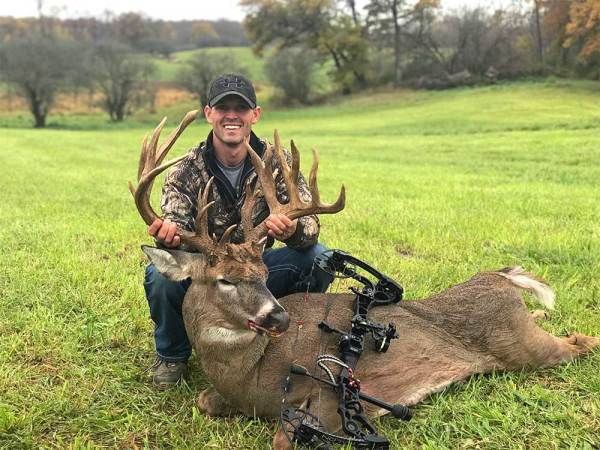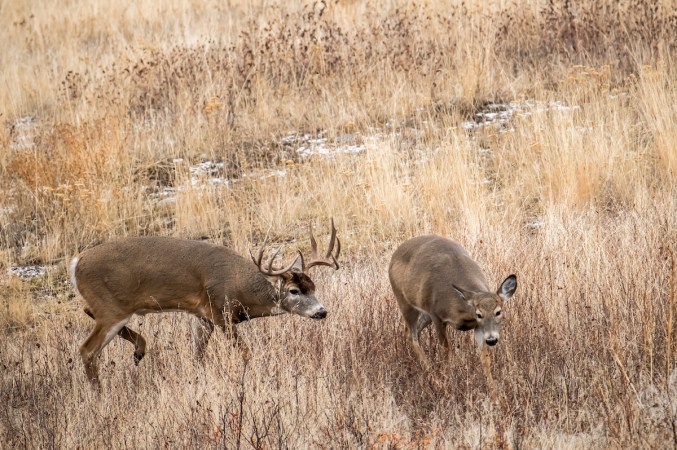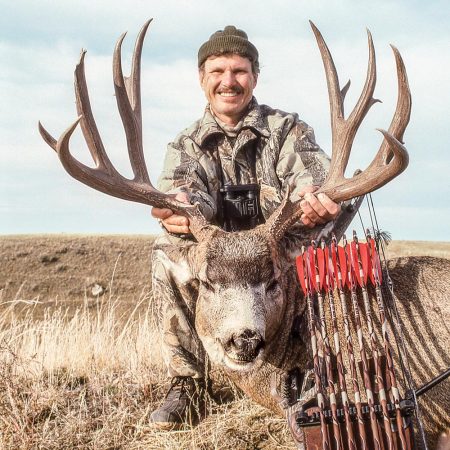We may earn revenue from the products available on this page and participate in affiliate programs. Learn More ›
Two years ago I learned a very valuable lesson. I was perched 40 feet up a tree over a wooded draw when a big seven-pointer responded to my grunt call. My arrow hit him right where I aimed, high in the chest and angling sharply downward. However, the buck went almost 300 yards before finally succumbing to the one-lung hit. I was lucky to recover him.
Last year, I hung a stand just 20 feet up that same tree. On the third day of my hunt a 12-point buck responded to my rattling and presented a similar 20-yard shot. From the lower height, the arrow took out both lungs. I watched him pile up.
Shot Geometry
Bowhunters should always strive for quick, humane kills by holding out for double-lung or heart shots. The higher you set your stand, however, the smaller the vital zone becomes. Broadside at ground level, an average whitetail’s vital zone is an irregularly shaped, 8-by 8-inch target. As tree-stand height increases, the shielding effect of the spine and scapular bones along with the narrowing chest cavity cause that zone zone to shrink. From 30 feet up, a deer standing 10 yards away presents a 45-degree shot angle with a target measuring on average only 6 by 4 inches–a 62 percent reduction in the size of the kill zone. Any higher and the angle becomes too steep and the target area too small for an acceptable margin of error.
Stay Out of Sight
Joe Hankins is one of the most consistently successful bowhunters I know. He has 21 big whitetail bucks to his credit. Hankins shot many of these bucks while hunting over 30 feet from the ground. “I feel naked in a tree if I’m lower than twenty feet,” he says. “Bowhunting high reduces my chances of being seen or smelled by deer.”
There’s no denying that hunters have a stealth advantage from tree stands hung in the stratosphere, but realize that Hankins can shoot softball-sized groups at 60 yards. A builder by trade, he is also very agile and has absolutely no fear of heights.
As a result, Hankins says that deciding how high to go is a decision each bowhunter needs to make on his own. In my opinion, it’s wise to hunt between 20 and 25 feet up. At that height, you must take full advantage of available cover while practicing smart scent-control measures, but the shot angles present a much larger area of the game animal’s vital zone.
To make up for the low height, I prefer evergreen trees because they have plenty of year-round foliage for concealment. In the absence of evergreens, I seek out large trees that have plenty of lower branches for cover. I’ve even been known to use duct tape to secure leaf-covered branches around stands to break up my outline.
Quick Tip
KEEP THE RIGHT ANGLE When shooting downward from a tree stand, bend at the waist to compensate for the downward shot angle.
Sight Radius
The downside to going higher is that with the increasing angle the target area that allows you to take out both lungs shrinks fast. The upside, says Dr. Karl Miller, deer researcher and professor at the University of Georgia, is that whitetails have pupils that are oval in shape and set horizontally. “This anti-predation trait lets deer see better on a horizontal plane but handicaps their vertical vision,” says Miller. “Deer are not engineered to see what’s high above.”
























